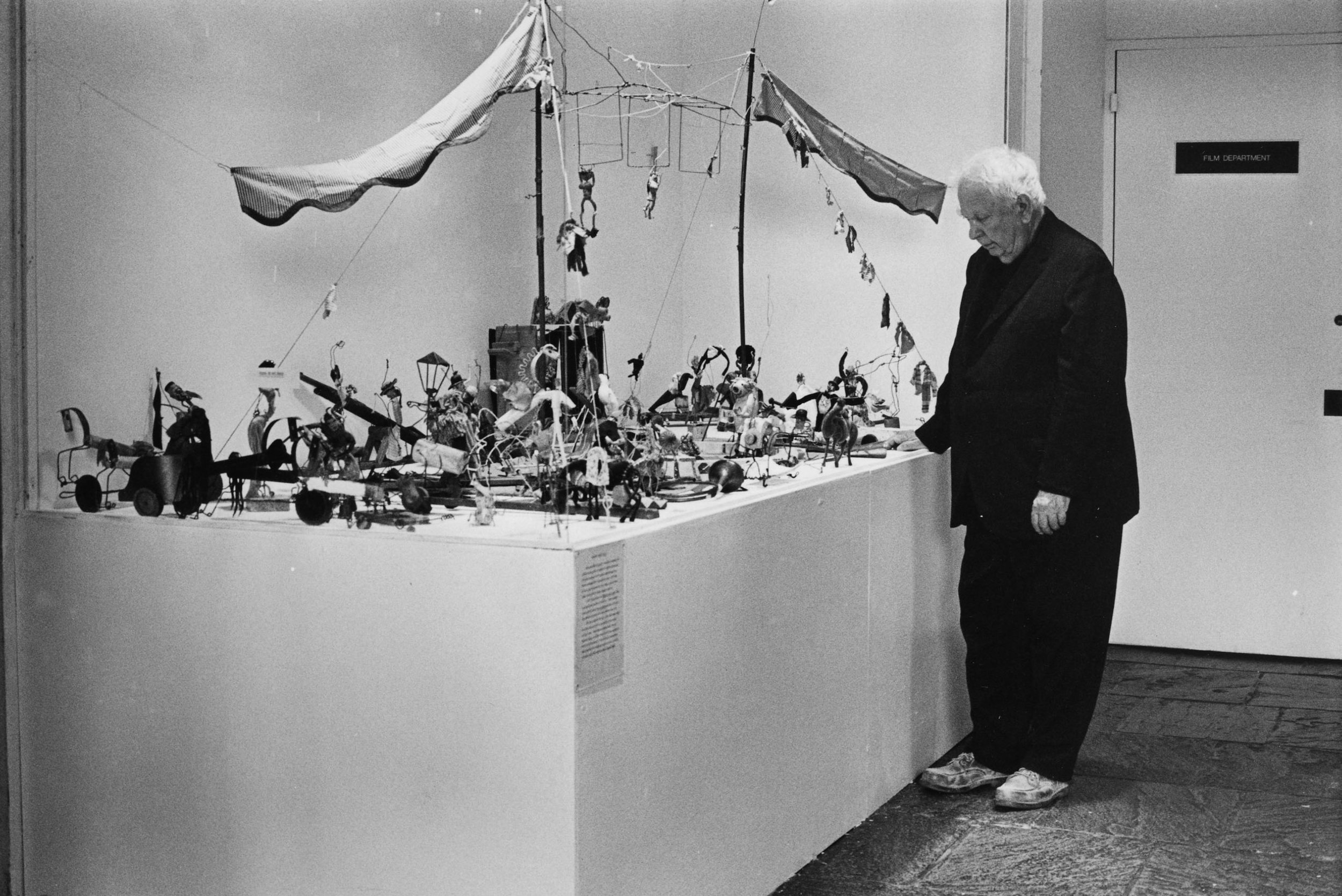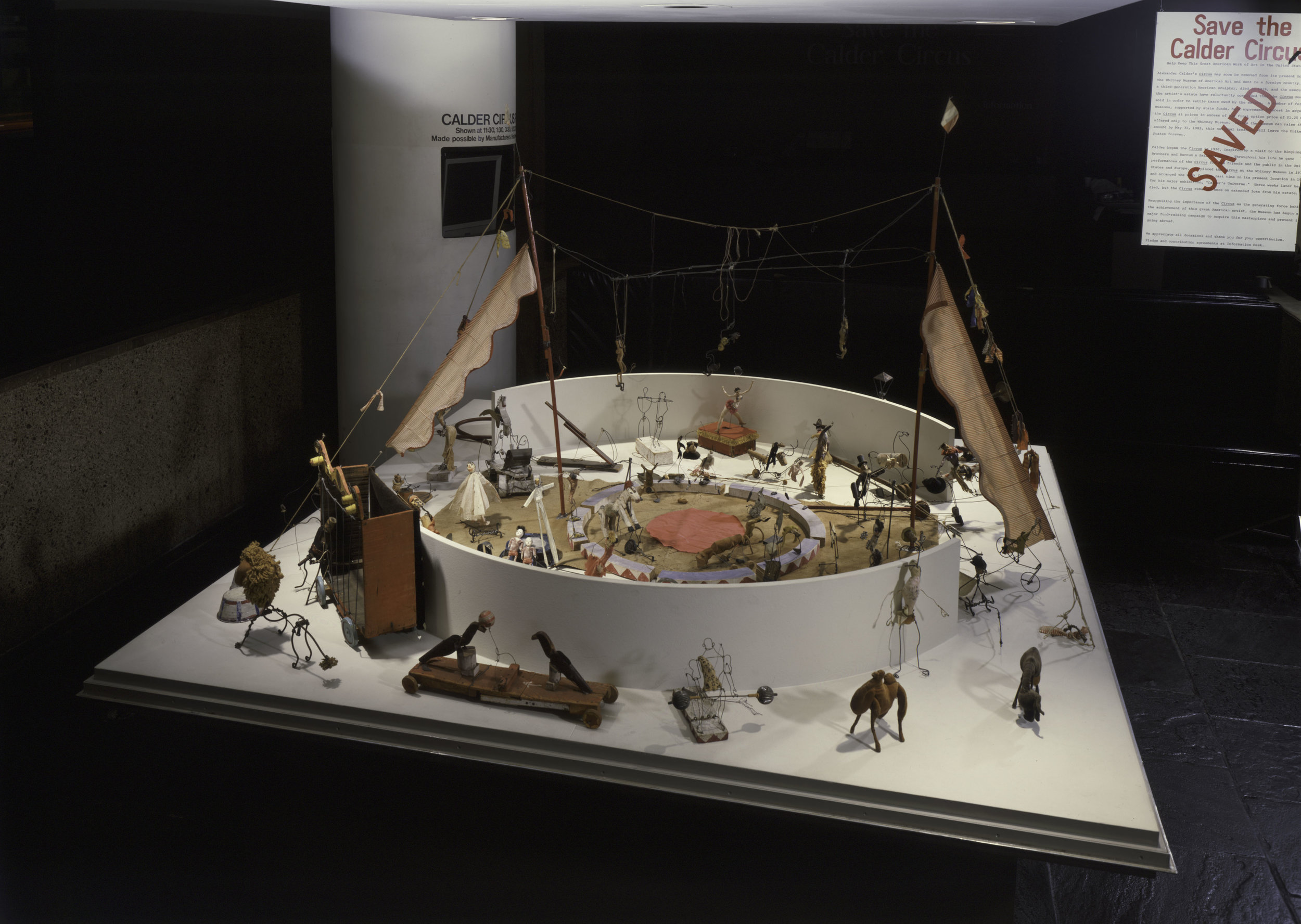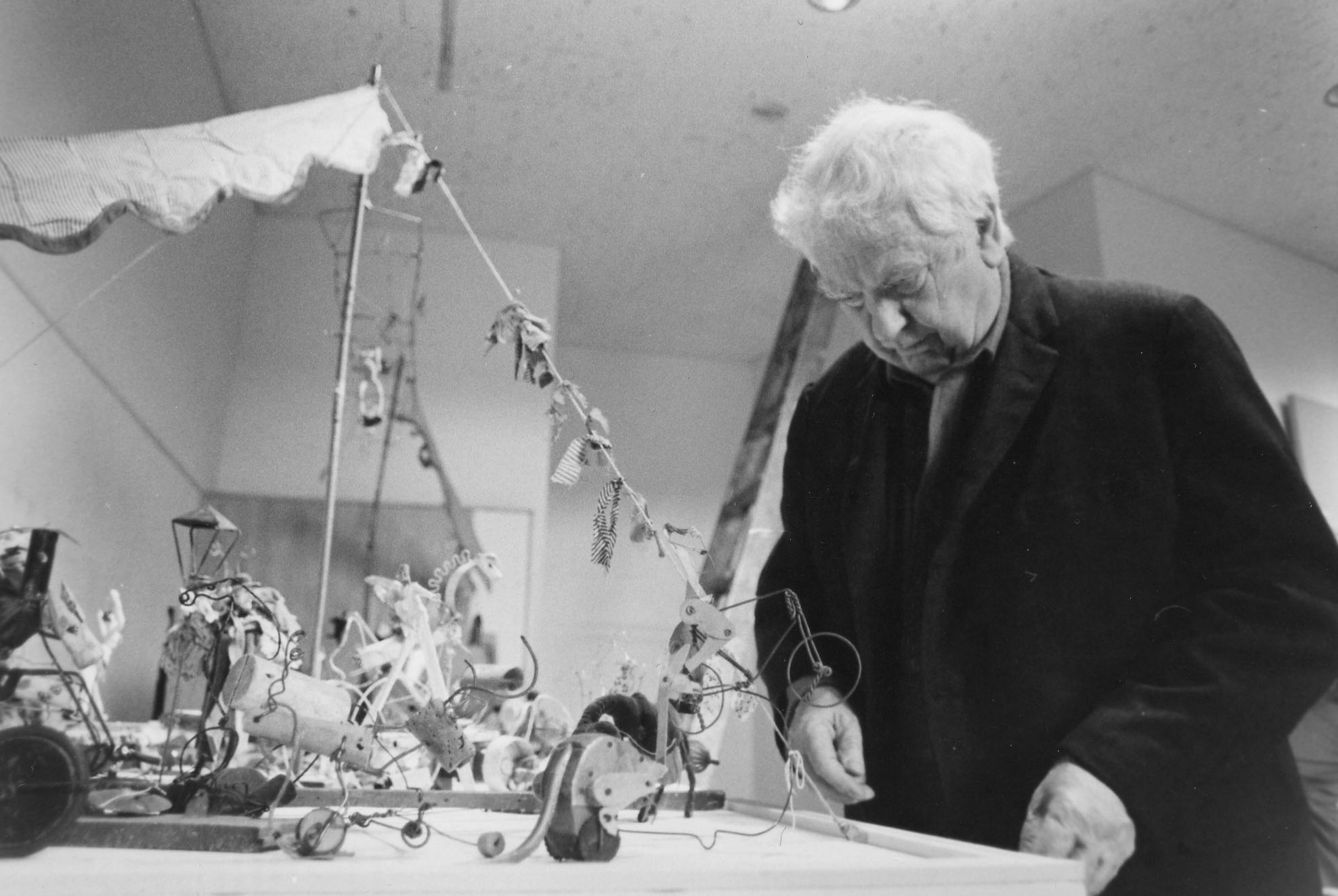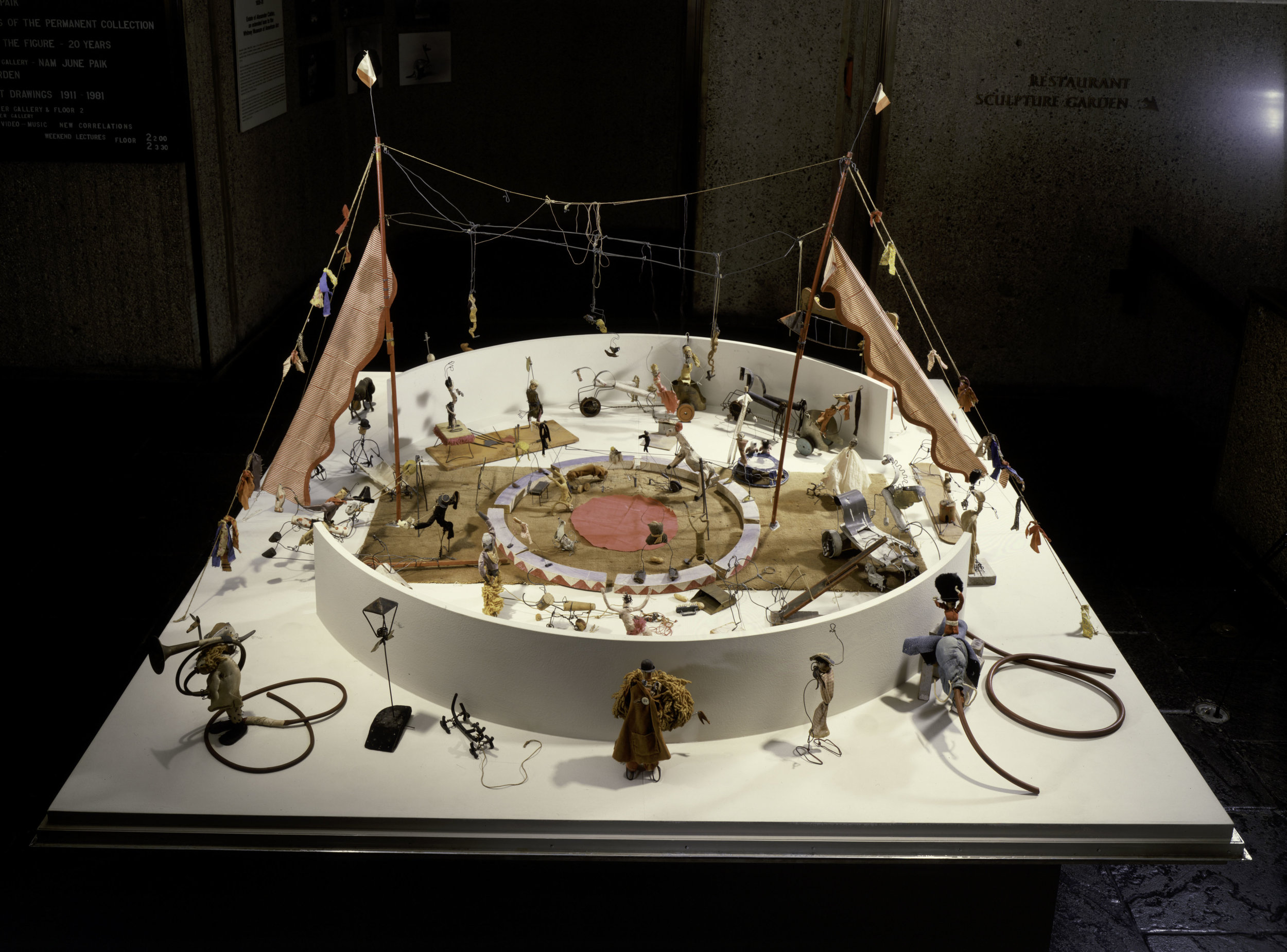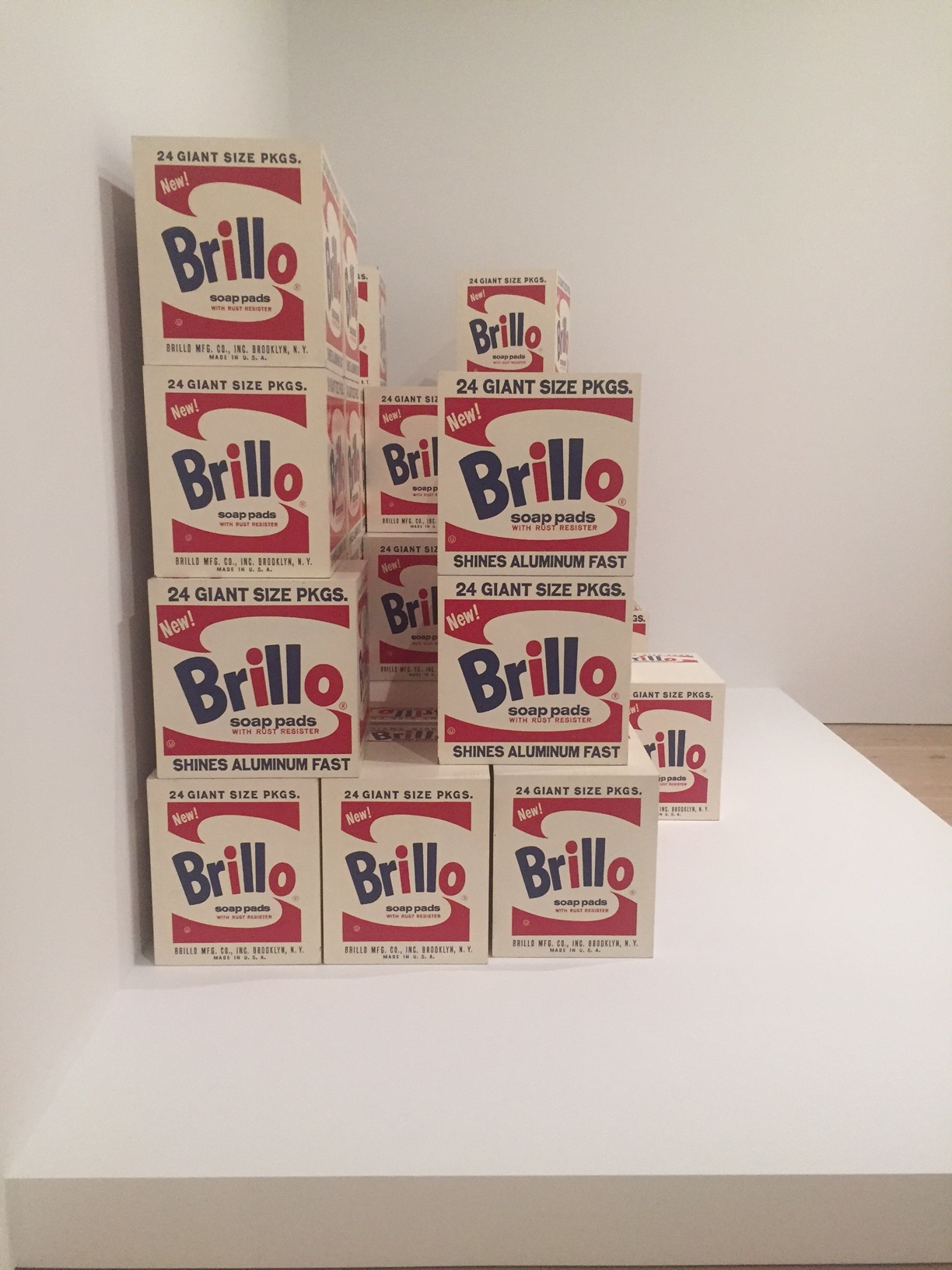Alexander Calder, or Sandy as he was known to his many friends, was a tinkerer as well as one of the signature artists of the 20th century. A recent show of work side by side with Picasso at the Picasso Museum in Paris made his canonization complete. The first artist to make a genre out of mobiles and stabiles and subsequent author of monumental works had, however, a much different--even miniature--beginning.
Calder’s Circus, now newly installed in the Whitney Museum, was actually the first expression of Calder’s playful artistic genius and came out of an assignment as an illustrator for the National Police Gazette at the age of 27. He was sent to the Ringling Bros Circus to sketch circus scenes and fell in love with the world of circus. The following year, in Paris, he created Calder’s Circus, an assemblage of miniature wire figures—walkers, clowns, trapeze artists, acrobats and animals and the like--that he packed into 5 trunks which he carried around with him and performed for lucky friends and avant garde circles. It gave him fame—and money to eat. It also began his exploration into the mechanics of wire work and balance he would need for his later, groundbreaking sculpture.
As an intern at the Museum of Modern Art, I was familiar with Calder’s work because MoMA had done a salute to him in 1970. MoMA’s collection was deep but the Whitney got the prize of the Circus. Designed by Marcel Breuer, the Whitney seemed to me a formidable, cold structure. Now I adore it, but then, it was imposing and I was intimidated, not fully understanding the Brutalist impulse.
Somehow the circus was a light, magical oasis amidst the heavy concrete. A companion film showed how he manipulated his mini figures and I was enthralled—as most people still are today by the ingenuity and humor of the works.
Around the same time, my college boyfriend’s father died and we were invited to the Martha’s Vineyard home of his law partner who was a major Calder patron. It was the first time I was able to see Calder’s work in a light and airy domestic setting and in fact the first time I ever saw important art in someone’s house—right near the kitchen. My mother had been a skilled amateur painter, but this was something else entirely.
In 1976, Calder attended the opening of a major retrospective of his work at the Whitney. At that point, his circus was moved to the lobby. Somehow, I was invited to the opening and Calder himself was there in a wheel chair circumnavigating his earliest successful creation. He was kind enough to interact with viewers and even to autograph my invitation. It was not the first time I had seen a famous artist up close but it was certainly the first time that one felt he could have been a friend. Just a few weeks later he was dead.
Installation designed for the lobby of Whitney Museum of American Art and use in 1976 exhibition. Calder’s Universe (Oct. 14, 1976—Feb. 6, 1977). Designed by Art Clark, exhibition designer for Calder’s Universe. Photograph Jerry L. Thompson. Remained on view in the lobby from 1977-1997 approximately.
